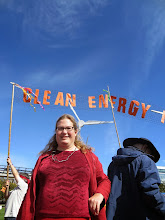In March 2007, Community Housing Works, a non-profit developer/owner of low income housing projects, unveiled a 56-unit multi-tenant unit (MTU) apartment complex called Solara in Poway, California, in San Diego county. Solara was designed from the ground up to incorporate green and sustainability features, including a net-zero energy footprint goal. To generate 100% of its own electricity, the project included a series of 836 solar photo voltaic (PV) panels with a total nameplate capacity of 142 kilowatts (kW) installed on rooftops and carports throughout the complex.
At the time of Solara's construction, most projects only attempted to incorporate solar PV to serve the energy load from common areas, such as laundry facilities or community rooms. These installations were limited because of outdated regulatory policies that required each individual unit to have its own physically isolated solar system.
Solara sought to bring solar power to all of its tenants and was forced in install separate arrays of panels for each and every unit. This meant taking a dozen panels at a time, wiring them to individual solar inverters (to convert energy from DC to AC), and running separate cabling from each cluster of solar panels directly into each tenant's separate electricity meter. Clearly, this was not the most efficient way to deliver power in an MTU property.
A Better Way?
In 2008, the California Public Utilities Commission (CPUC) created a program called "Virtual Net Metering", or "VNM" specifically for Multifamily Affordable Solar Housing (MASH) projects like Solara. (CPUC decision 08-10-036.)
Read More:
http://www.environmentalleader.com/2011/09/07/solar-gardens-sprouting-soon-in-a-community-near-you/
Joy Hughes, Founder, Solar Gardens Institute http://www.solargardens.org
CEO, Solar Panel Hosting LLC http://www.solarpanelhosting.com
(719)207-3097 direct
Subscribe to:
Post Comments (Atom)


No comments:
Post a Comment